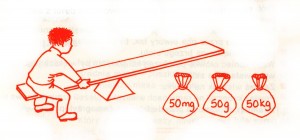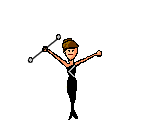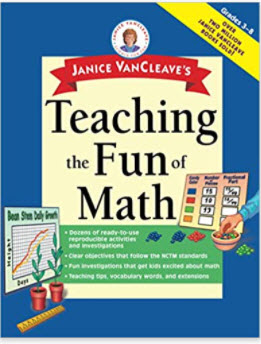A make-shift see-saw in the center of my classroom got the attention of the kids entering my math class. I had borrowed a saw-horse and a long board from builders who were making repairs on the school. The see-saw was one of many science experiments that I used to teach math. But even in a science class the strange looking see-saw might be considered weird by some. After a while, my classes were surprised if weird paraphernalia wasn’t in the classroom.

So how can a see-saw be used to teach science and/or math?
The diagram is part of an elementary math book that I later wrote. The diagram could be part of any math worksheet teaching weight measurements. So, which bag is the best choice as a counter-balance? A counter-balance is what ever makes the see-saw balance, which means the board will be horizontal to the ground (or floor). From the choices, the answer has to be the 50 lb bag.
Does it matter where the counter-balance is placed on the see-saw? The answer is yes.
Kids know that when two people of different weight see-saw, the heavier person must sit farther from the end while the lighter person sits as close to the end as possible. Of course, this is assuming that the support for the see-saw is in the center of the board. Older kids teach this to younger kids. But, few can explain why. This is where math comes in.
1. Introduce the concept of TORQUE, which can be described as a turning force. When you turn the lid on a jar, you apply torque. Torque always make an object turn in a circular direction. The baton in the diagram is twirling (turning in a circular motion) because the twirler is applying torque to the baton.

2. Explain that the amount of TORQUE depends on the amount of force and how far the force is from the turning point. So, where is the turning point on the see-saw? Where the board is supported. How can a force be measured? Weight is a force. In fact, it is the measure of the force of gravity on an object. I used a bathroom scale to determine the weight of kids. Note: I put a line across the board to mark the turning point of the board. The name of this point is the fulcrum.
3. One math objective using the see-saw can be to introduce equations.
- Older kids can be introduced to the formula for torque, which is: T = F x d
The formula is read as: Torque is equal to the product of a force times the distance the force is from the fulcrum. - Younger kids can make comparisons, for example: Weight x distance = Weight x distance
This equation compares the torque of a person on one side of the fulcrum to the torque of the person on the opposite side of the see-saw. This comparison was used to compare the weight of two students.
Discover for Yourself
Let two people of unknown weight get on a see-saw. When they are seated so that the board is balanced. The heavier person is always sitting closer to the turning point (the center of the see-saw–the fulcrum).
Enrich the Activity:
Follow the previous procedure, but have one of the people weight. Also, use a measuring too to determine the distance each is sitting from the fulcrum. Using chalk, each person made a mark on the board even with the back of their bottom. Now an equation was written. For example, if one person weight 40 pounds and sits 3 feet from the fulcrum, how much does the second person weight if he/she sits 4 feet from the fulcrum.
Weight x distance = Weight x distance
40 lb x 3 feet = Weight x 4 feet
120 ft.lb/4 ft = 30 lb
Answer: 30 lbs
CAUTION: Girls don’t always want to be weighed–so make it voluntary. Boys on the other hand will weigh with their boots on.
